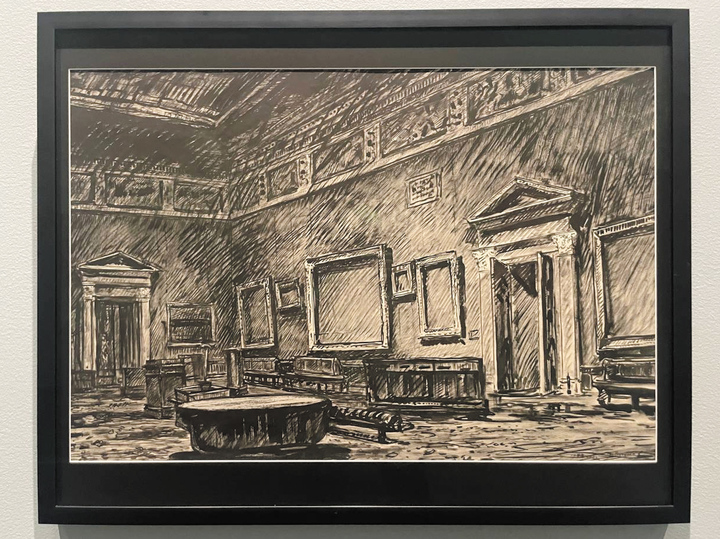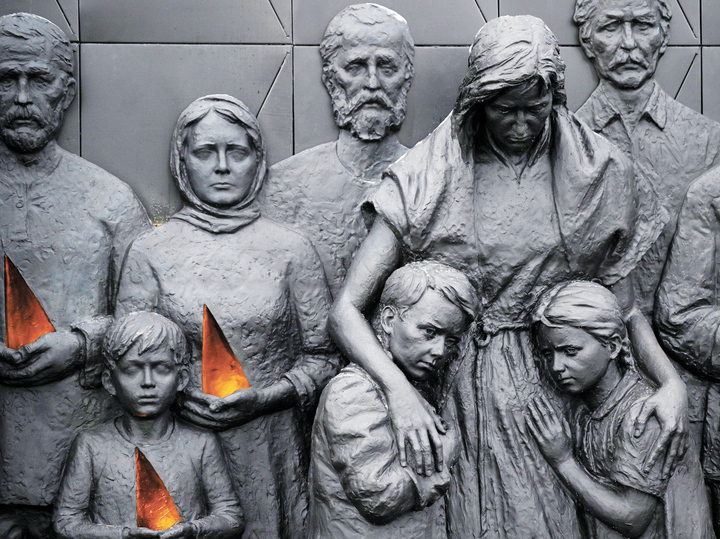“Never before has the day of lifting the blockade been celebrated like this”
[ad_1]
For the first time in 80 years, the Siege of Leningrad was remembered on such a large scale in St. Petersburg, trying to find a formula for this complex story. Talking about those events is painful and scary, but necessary. “People want to know” – it’s no coincidence that this is the title of the book by Daniil Granin and Ales Adamovich, which talks about the creation of the “Siege Book” – a documentary chronicle of a besieged city, written in the 1970s and only 10 years ago (!) published in full and without bills
Nevsky Prospekt is dressed in red flags and posters reminiscent of January 27, 1944. On this day 80 years ago, after almost 900 days of horror, hunger, and constant shelling, Leningrad was completely freed from the siege. Then fireworks rang out over the city – many thought it was another shelling, but it was a sign that the worst was over.
“For the last 15 years, the day of the lifting of the blockade has been celebrated more and more loudly, but never like now,” a girl I met on Nevsky told me. — Articles, reports, films were published. Exactly at 21.00 people lit candles on their windowsills; every year there were more and more candles. But this time there is something special.
A sense of belonging is in the air. The only sign from the blockade, preserved on Nevsky, which states that “during shelling, this side of the street is the most dangerous,” is strewn with red carnations. The mountain of flowers keeps growing, scattering onto the uncleaned asphalt. Walking the streets of St. Petersburg is now dangerous: the snow that melted due to the thaw is almost never removed. And yet, on January 27, many came to the center to touch history. The blockade was remembered in many places – in different formats.

In the morning, on the day of mourning, at the Piskarevskoye cemetery, Vladimir Putin, Patriarch Kirill, Valentina Matvienko, dozens of officials laid flowers at the mass graves where hundreds of thousands of people were buried – victims of the blockade and soldiers of the Leningrad Front. Among them lies the president’s elder brother, Victor, who was only two years old when he died in 1942 (presumably from diphtheria). Then the head of state visited the Nevsky patch – a bridgehead on the left (eastern) bank of the Neva, which was held by Soviet troops during the battle for Leningrad. The defenders of the patch repelled dozens of attacks every day; 50 thousand shells fell on them per day. It is not known exactly how many people died there, but, according to some estimates, more than 100 thousand people. Afterwards, the president, together with Alexander Lukashenko, who joined him, went to the Gatchina district of the Leningrad region, where during the Great Patriotic War camps for prisoners of war and donor concentration camps for Soviet children were located. Here, in the village of Zaitsevo, a monument to the victims of the Nazi genocide was unveiled – a 47-meter stele, on top of which is the figure of a mother with children. The authors of the memorial project were sculptor Andrei Korobtsov and architect Konstantin Fomin.

On Memorial Day, many museums opened projects dedicated to the days of the blockade. The largest one was prepared by the Manege. “We thought for a long time about the “formula” of the project – we carried it like a child for 9 months,” said Manege director Anna Yalova.
The painful story of the blockade is told here as a living human drama. Five personal stories – five destinies in first-person memories, and behind them the whole hell of the “Leningrad apocalypse”. We go through it together with the characters – from the first days to the last. The focus is on a boy who is destined to lose all his relatives, a kindergarten teacher, a young scientist who came up with ways to save himself from dysentery and grew dandelions and nettles to feed the residents, his beloved, an artist who helped evacuate paintings from the Hermitage. And also a violinist who continued to play with frozen fingers and took part in the legendary premiere of the legendary Shostakovich symphony, the score of which was miraculously flown into the besieged city by a military plane. On the one hand, we have very specific people in front of us, on the other, these are collective images.

In Manege, the story about the blockade is close to Granin’s formula – in the sense that we live the story through the experience of the participants in those events. But sometimes it is unclear where is artistic comprehension and where is documentary. Many exhibits are presented as copies next to unique artifacts that preserve the memory of the siege, which creates a cinematic effect. This is a poignant drama about how to preserve the human inside you in the most inhuman times.
The Russian Museum project called “Remember!” more conservative in presentation, but at the same time more documentary. It opens with a bronze model of the monument “The Road of Life” by Konstantin Simun, which represents two arcs that, like a drawbridge, should come together, but remain open. Most of the exhibition consists of works by blockade artists. In 1941 – just when the daily ration was reduced to an insignificant 125 grams – a small exhibition of paintings that surviving artists continued to paint was opened at the Leningrad Union of Artists. There was military censorship in the city – it was forbidden to photograph the horrors of the siege; diary entries were made on pain of death. The country did not know what was happening in the besieged city. The artists continued to write – the exhibition was constantly being replenished. There are memories of how the authors brought a painting to an exhibition and, as soon as they gave it to the exhibition, dropped dead from hunger. Some of the presented works were miraculously taken to Moscow in 1942, where they were shown in the Pushkin Museum. Only then did the country find out what was going on in Leningrad, they saw through the eyes of artists corpses on the streets that there was no one to bury, sleds with dystrophies, people swollen from constantly drinking water, which was used to replace food. A separate cinema hall tells about the fates of a dozen artists – based on albums and drawings that have been preserved from the siege. People who found themselves in a real hell, where more than a million people died, did not think of bread alone.
The finale of the day of grief was a multimedia video that was broadcast to the General Headquarters. At 20 pm, Nevsky Prospect was partially blocked, and the crowd gathered on Palace Square. Red spotlights glided across the Winter Palace until the building opposite turned into a large canvas, where the blockade was shown colorfully and effectively. It is strange that there was not a moment of silence immediately after the show. Instead, the voice of the announcer for the entire Palace listed a dozen organizations and publications that supported the multimedia show project financially or informationally. It would have been more appropriate to include an excerpt from a Shostakovich symphony or nothing at all.
After the show, the crowd, kneading the uncollected snow on the paving stones, went to the Neva embankment, where fireworks were fired at 21.00. Most watched silently. Although rare shouts of “Hurray!” were heard in the crowd. Someone congratulated each other on the holiday. Not everyone accepted these words, answering: “This is not a holiday, but a day of sorrow.”
For a long time after the war, they tried to talk about the blockade exclusively with heroic pathos, as if each of the blockade survivors died almost with a smile on their lips. This is wrong. Millions of people who found themselves there experienced real hell. It is important to remember and know this entire “Siege Book” without cuts. In St. Petersburg, where the blockade is an integral part of self-identification, they are still looking for a formula for narrating this difficult memory.
Saint Petersburg.
[ad_2]
Source link








